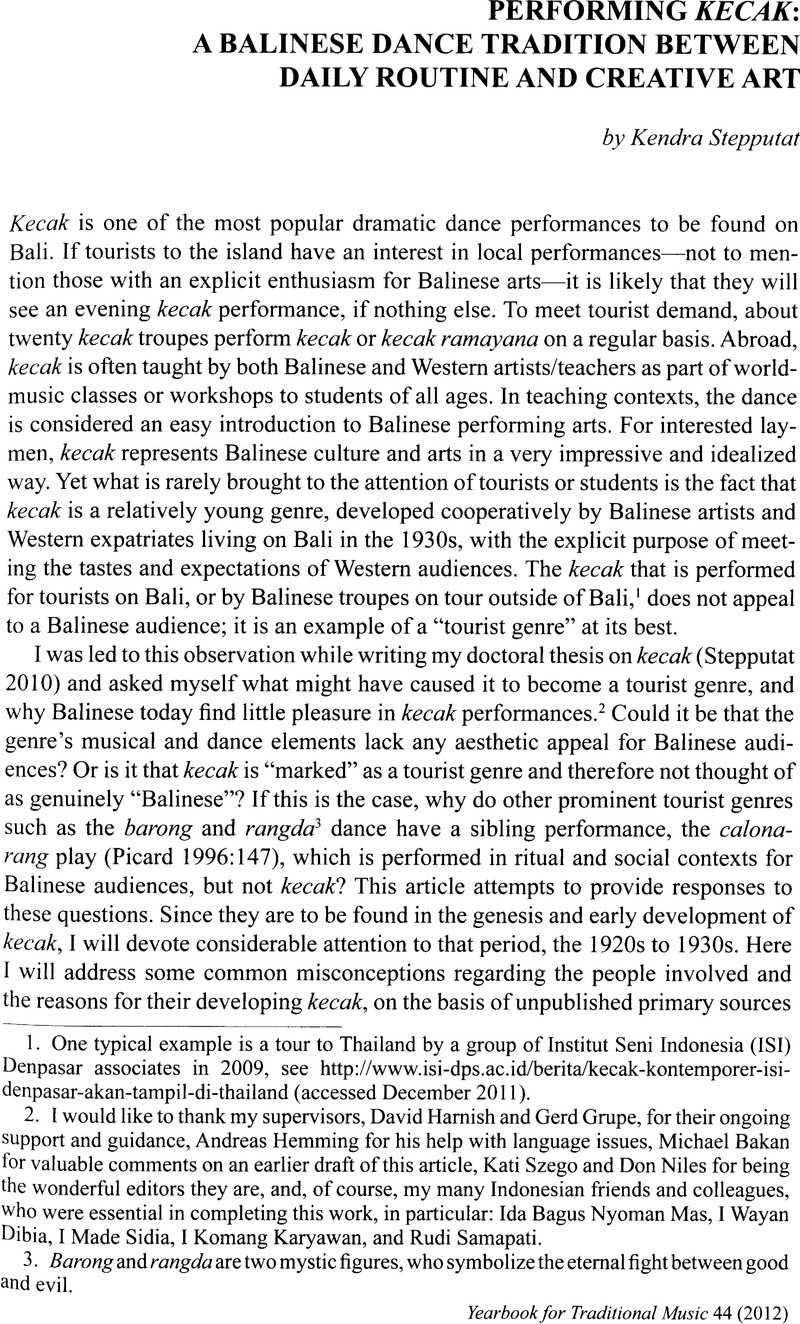Crossref Citations
This article has been cited by the following publications. This list is generated based on data provided by Crossref.
Escobar Varela, Miguel
and
Hernández-Barraza, Luis
2019.
Digital dance scholarship: Biomechanics and culturally situated dance analysis.
Digital Scholarship in the Humanities,
Bosnak, Judith E.
2020.
Moldear la danza-drama barong en el Bali paradisiaco: discursos orientalistas de Miguel Covarrubias y sus redes.
Anales del Instituto de Investigaciones Estéticas,
p.
77.
Goldman, Jonathan
and
Strachan, Jeremy
2020.
Indonesian Cultural Diplomacy and the First International Gamelan Festival and Symposium at Expo 86.
American Music,
Vol. 38,
Issue. 4,
p.
428.
Sukatman, S.
and
Wuryaningrum, Rusdhianti
2024.
The origin of the name Kecak dance, sociocultural context, symbolic power, and management challenges of the Indonesian tourism industry in global competition.
Cogent Arts & Humanities,
Vol. 11,
Issue. 1,





